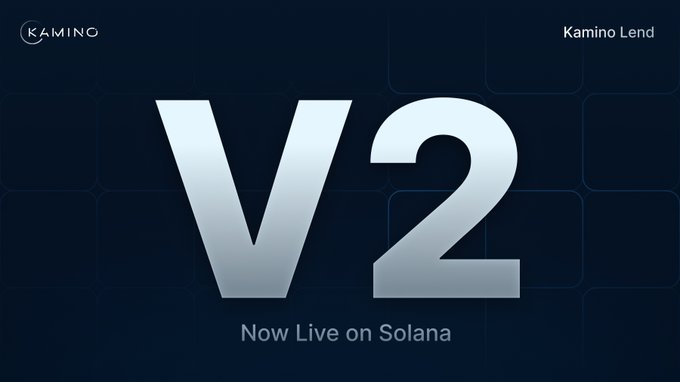Kamino Finance: A One-Stop DeFi Hub in the Solana Ecosystem
On May 30, 2025, Kamino Finance (KMNO), a leading DeFi protocol in the Solana ecosystem, announced the listing of its token on OKX spot trading, further cementing its role as an on-chain liquidity hub. The project centers on concentrated liquidity vaults and automated yield strategies, currently managing over $16 billion in assets and commanding 38% of Solana’s DeFi TVL share. With OKX’s liquidity injection, KMNO’s market cap may surge towards $3 billion, setting a new benchmark for Solana DeFi protocols.

This Token Insights article delves into how Kamino Finance leverages concentrated liquidity vaults and leveraged strategies to lead the Solana DeFi market, analyzing its token model and the implications of its OKX listing.
Technical Architecture: Concentrated Liquidity and Capital Efficiency Revolution
Kamino Finance’s core competitiveness stems from its concentrated liquidity algorithm and multi-strategy vault design:
-
Dynamic LP Management: Upon depositing assets, users receive kTokens. The protocol automatically adjusts the price range of liquidity positions, tripling capital efficiency and reducing impermanent loss by 60% compared to traditional AMMs. For instance, the SOL/USDC pool offers annual yields of 22%-35%.
-
Leverage Strategy Integration: Multiply Vaults allow users to deploy up to 5x leverage in one click, with real-time monitoring of liquidation risks to avoid forced closures.
-
Cross-Chain Compatibility: Already supports Solana and Polygon, with plans to integrate Bitcoin Layer 2 network Stacks in Q4 2025, enabling BTC collateral lending.
Developers can track Kamino Finance vaults’ real-time yields and position distribution using JuCoin’s on-chain analytics tools.
Tokenomics: Governance and Yield Boosting Mechanism
KMNO has a total supply of 10 billion tokens, with 10% (1 billion) in initial circulation. Its economic model focuses on governance and user incentives:
-
Governance Voting: Token holders can decide fee rates (currently 0.15%), product launch priorities, and more.
-
Staking Boosts: Staking KMNO grants up to 300% multiplier in protocol points, enhancing yield farming efficiency.
-
Deflationary Design: Part of transaction fees are used for token buyback and burning to curb inflation.
KMNO’s current market cap is approximately $2.4 billion (at $0.24/token). After its OKX listing, daily trading volume is expected to surpass $200 million, expanding liquidity distribution from Bybit and Gate.io to mainstream platforms.
Impact of OKX Listing and Market Competition
The opening of spot trading on OKX carries dual significance for KMNO:
-
Liquidity Upgrade: OKX’s daily DeFi-related trading volume exceeds $5 billion, potentially pushing KMNO into CoinMarketCap’s top 100.
-
Institutional Entry Point: Regulated custody services attract traditional capital like hedge funds to engage in staking and leverage strategies.
However, competitive pressure remains intense:
-
Internal Solana Rivals: MarginFi competes via zero-interest lending, driving KMNO’s lending utilization rate down to 5.3%.
-
Cross-Chain Threats: Aave V4’s planned adoption of concentrated liquidity could directly challenge Multiply Vaults’ competitive edge.
Risk Challenges: Regulation and Technical Bottlenecks
Kamino Finance faces three major risks:
-
Regulatory Scrutiny: The U.S. SEC is investigating its advisor token allocations (35% share); classification as unregistered securities could lead to compliance restructuring.
-
Network Performance Limits: Solana congestion can delay liquidations by 8–15 minutes, potentially increasing user losses during volatile markets.
-
Security Vulnerabilities: A “precision loss bug” discovered in a March 2025 audit has been patched, but continuous code validation remains essential.
Additionally, the expansion of PayPal’s stablecoin PYUSD on Solana may be constrained by EU MiCA capital requirements, possibly impacting Kamino’s revenue sources.
Future Plans: RWA Expansion and Institutionalization
Kamino Finance’s roadmap focuses on bridging traditional finance and crypto markets:
-
RWA Pilot: Launching real estate-backed lending and tokenized bond products in Q3 2025.
-
AI Risk Control: Introducing machine learning models to dynamically optimize interest rate curves and minimize bad debts.
-
Asia Compliance: Applying for the Hong Kong Monetary Authority’s stablecoin sandbox license, targeting HK$10 billion in on-chain asset management.
If its Bitcoin Layer 2 integration is successful, KMNO could become the first DeFi protocol to support multi-chain RWA collateralization, potentially driving Solana’s DeFi TVL past $50 billion in 2025.




